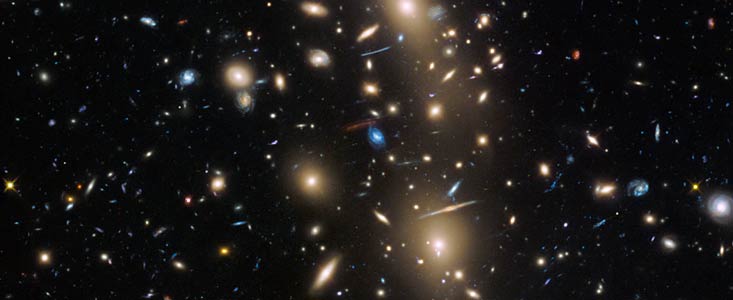
Peering ever further back in space and time, the Hubble Space Telescope has glimpsed the largest known group of the faintest and youngest primordial galaxies ever—over 250—some of which are estimated to have formed only 600 million years after the Big Bang. These smaller dwarf galaxies are considered to have played a vital role in the formation of the Universe that we are familiar with today.
The galaxies were discovered by a team of astronomers, led by Hakim Atek of the Ecole Polytechnique Fédérale de Lausanne, in Switzerland, as part of Hubble’s Deep Field observations. Since the light has taken over 12 billion years to reach Earth, Hubble is essentially looking back in time to when the Universe was still very young, cosmologically-speaking.
Not only is this the largest number of such galaxies found so far, these galaxies are also the faintest ever seen. As noted by Johan Richard from the Observatoire de Lyon, France, “The faintest galaxies detected in these Hubble observations are fainter than any other yet uncovered in the deepest Hubble observations.”
In a previous deep field search in 2010, for example, 29 similar candidate primordial galaxies were discovered, as compared to the over 250 found this time.
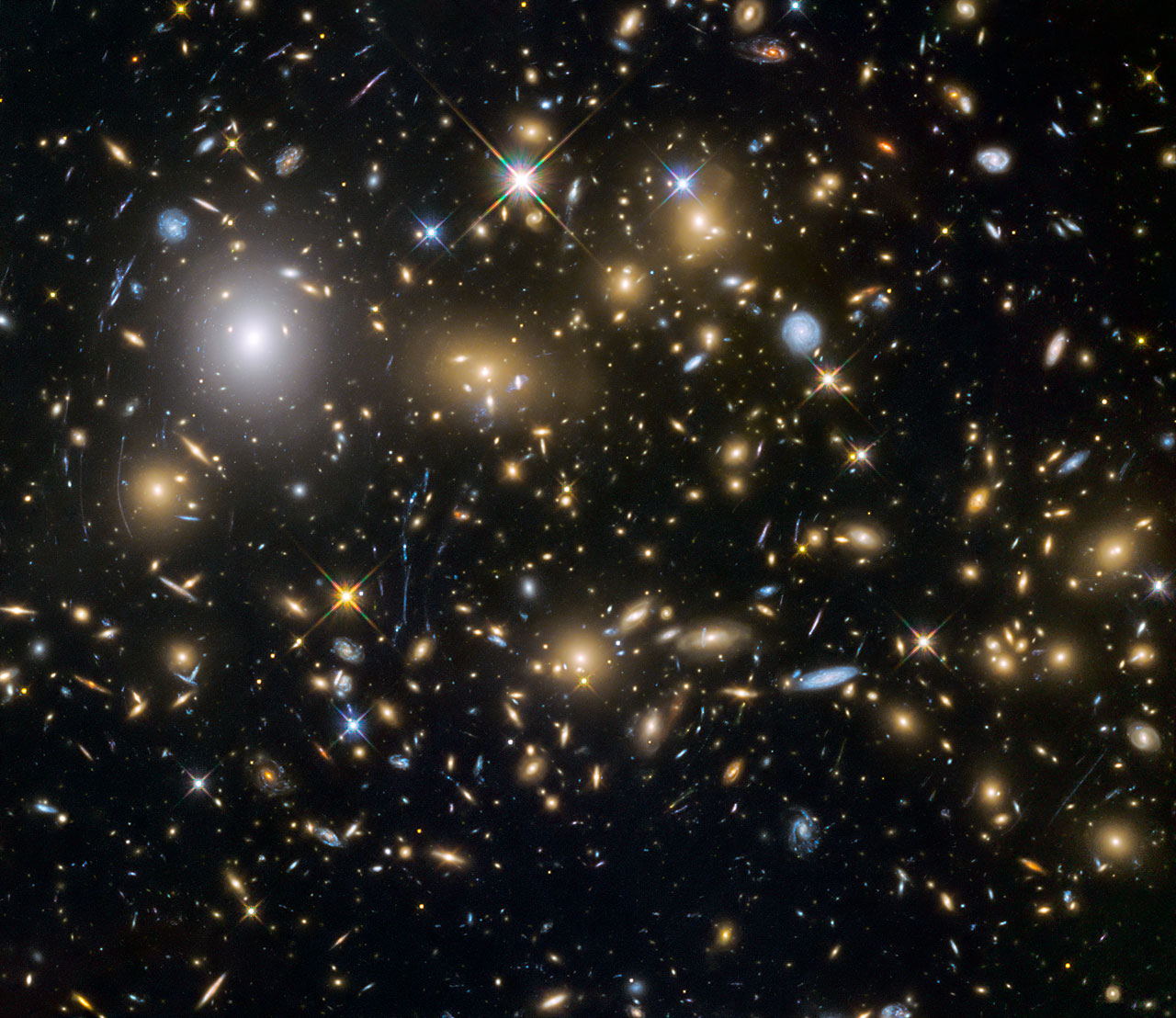
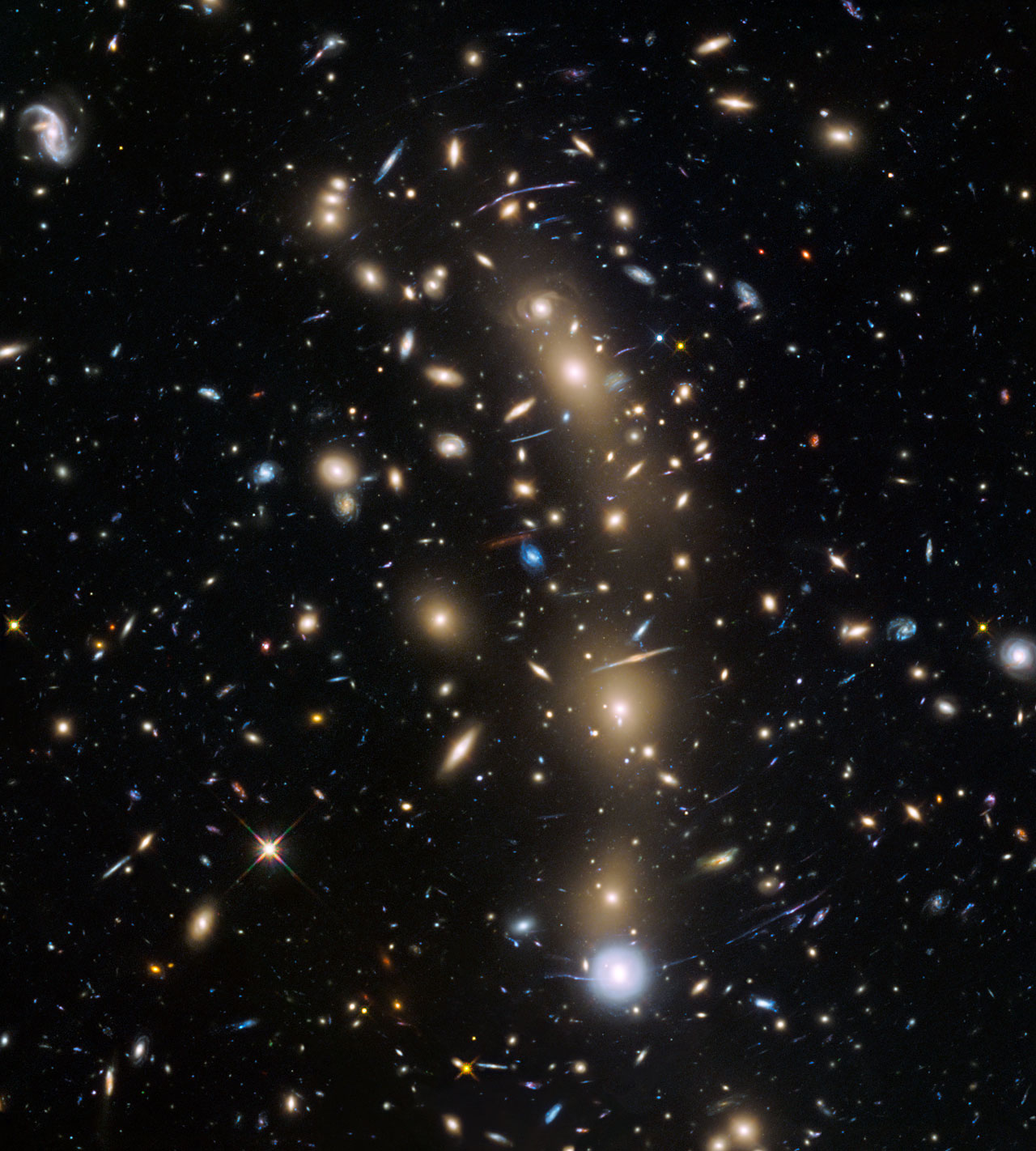
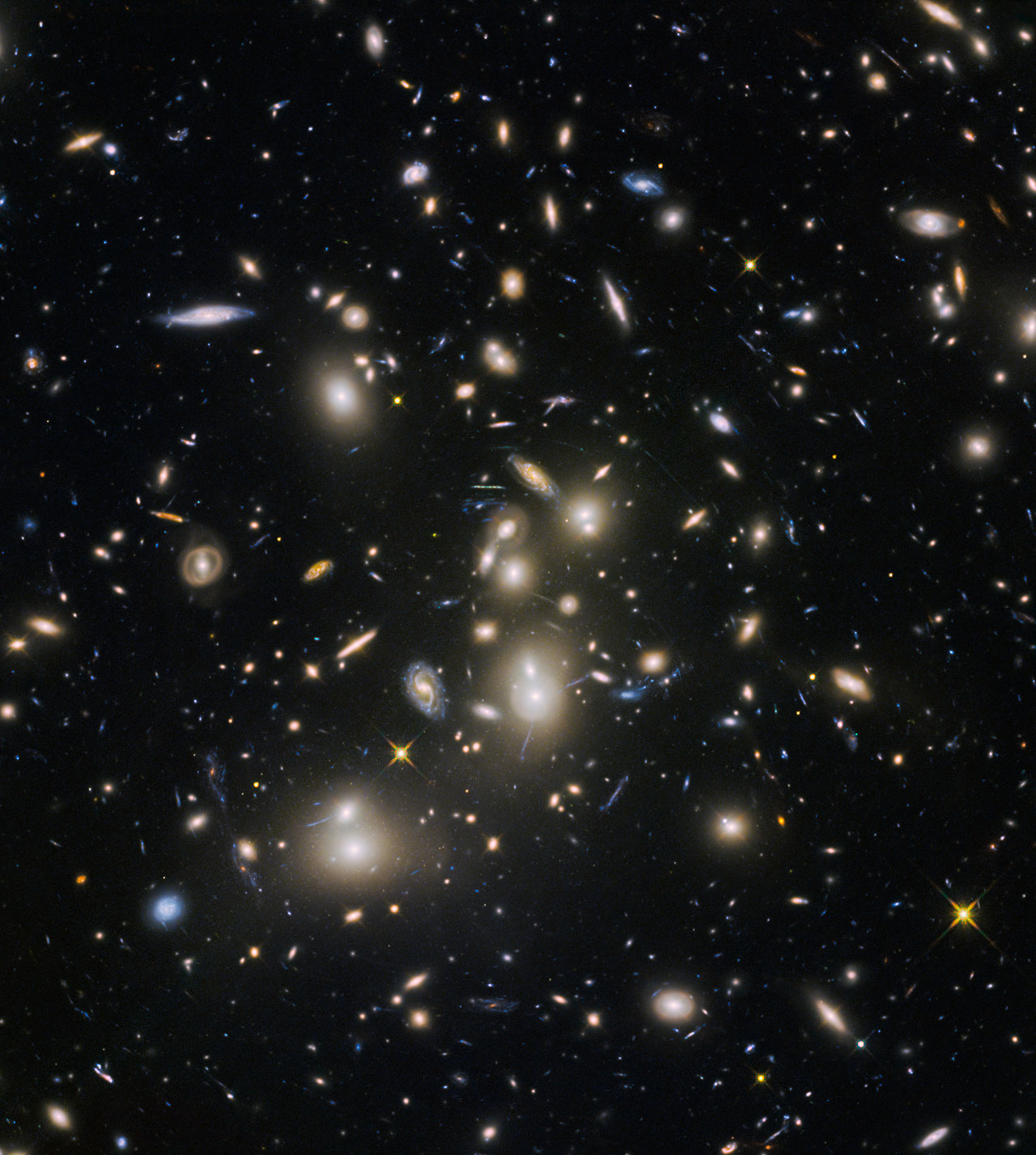
The team discovered that the accumulated light from all of the galaxies might have played a major role in the “reionization epoch,” a not-well-understood period in the Universe’s early history. During this period, the thick cloud of hydrogen gas which permeated the Universe began to dissipate, allowing ultraviolet light to travel greater distances; the Universe then became “transparent” to ultraviolet light. The smallest and most abundant galaxies would have helped to keep the Universe transparent, which is how we still see it today. The deionization epoch is estimated to have ended about 700 million years after the Big Bang.
The findings are detailed in a new paper published in the Astrophysical Journal.
According to lead author Atek: “If we took into account only the contributions from bright and massive galaxies, we found that these were insufficient to reionize the Universe. We also needed to add in the contribution of a more abundant population of faint dwarf galaxies.”
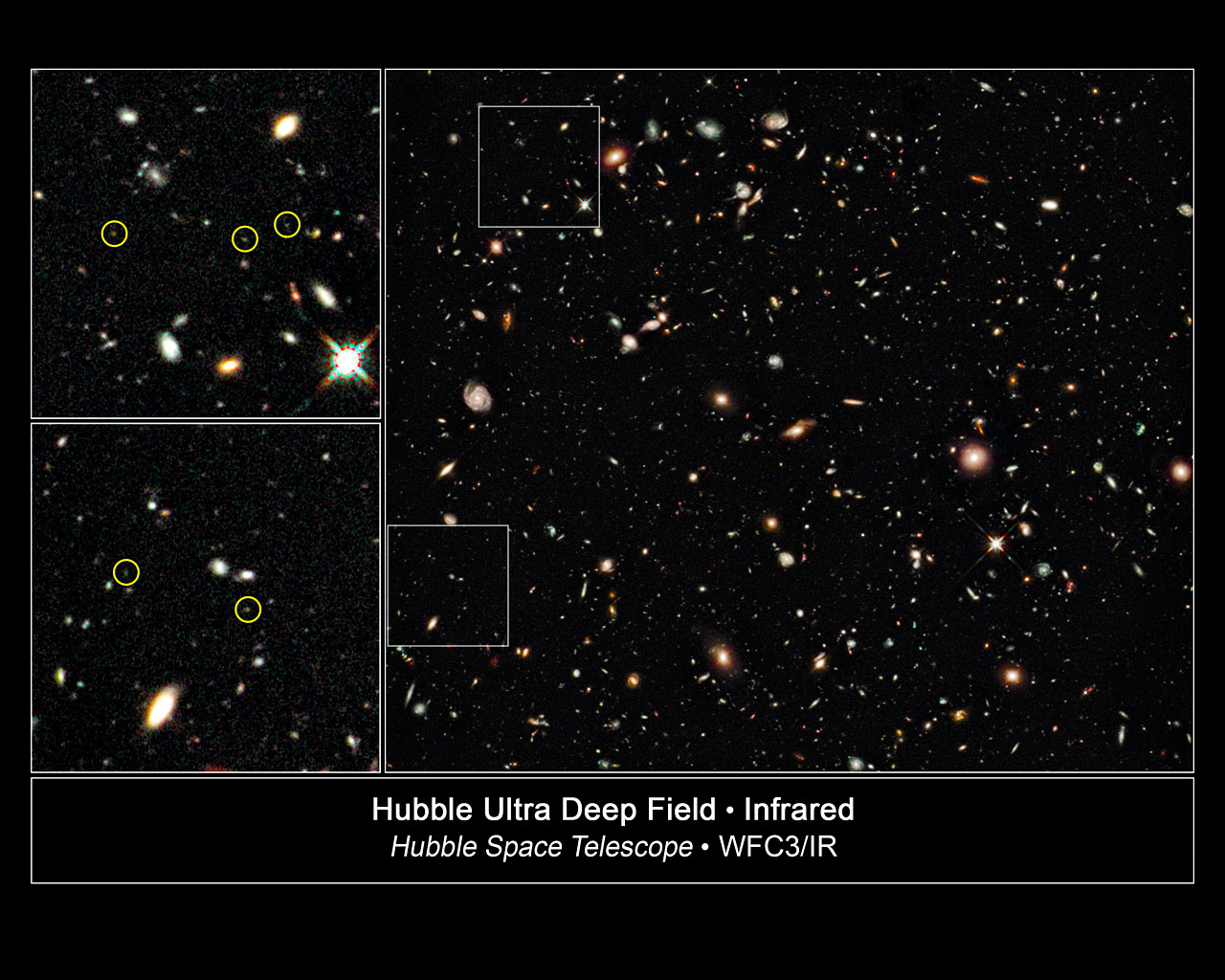
Gravitational lensing was used to help obtain the new images, in three galaxy clusters, and the images are part of the Hubble Frontier Fields program. The light from the faint galaxies is magnified by the strong gravitational fields emitted by the galaxy clusters. As Jean-Paul Kneib, co-author of the study from the Ecole Polytechnique Fédérale de Lausanne, Switzerland, explained, “Clusters in the frontier fields act as powerful natural telescopes and unveil these faint dwarf galaxies that would otherwise be invisible.”
“Hubble remains unrivaled in its ability to observe the most distant galaxies. The sheer depth of the Hubble Frontier Field data guarantees a very precise understanding of the cluster magnification effect, allowing us to make discoveries like these,” said study co-author Mathilde Jauzac, from Durham University, U.K., and the University of KwaZulu-Natal, South Africa.
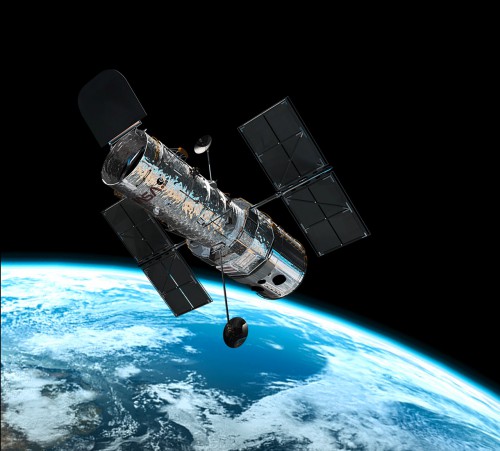
From the paper:
“With the help of gravitational lensing we have produced the best constraints currently available on the UV luminosity function and the contribution of galaxies to the IGM reionization at z ∼ 7. We clearly demonstrate here the great potential and the feasibility of peering into the early universe through these cosmic telescopes. The remaining HFF clusters will certainly help improve even more our constraints on the UV LF at z ∼ 7 and in particular at z ∼ 8 to better assess the role of galaxies in the cosmic reionization process. Our results also show the great promise of future programs targeting lensing fields and pave the way to observing programs with the James Webb Space Telescope or the Wide-Field Infrared Survey Telescope (WFIRST), which are scheduled for launch in the near future.”
Later, Hubble will peer at three more galaxy clusters, allowing astronomers to hopefully look back even further in time to the very early Universe.
The Hubble Frontier Fields is a three-year, 840-orbit program which will yield the deepest views of the Universe to date, combining the power of Hubble with the gravitational amplification of light around six different galaxy clusters to explore more distant regions of space than could otherwise be seen.
The Hubble Space Telescope, launched April 24, 1990, has provided unprecedented new views of stars, galaxies, nebulae, and other cosmic phenomena. It was the first major optical telescope to be placed in space. Some interesting facts:
- Hubble has made more than 1.2 million observations since its mission began in 1990.
- Astronomers using Hubble data have published more than 12,800 scientific papers, making it one of the most productive scientific instruments ever built.
- Hubble does not travel to stars, planets or galaxies. It takes pictures of them as it whirls around Earth at about 17,000 mph.
- Hubble has traveled more than 3 billion miles along a circular low Earth orbit currently about 340 miles in altitude.
- Hubble has no thrusters. To change pointing angles, it uses Newton’s third law by spinning its wheels in the opposite direction. It turns at about the speed of a minute hand on a clock, taking 15 minutes to turn 90 degrees.
- Hubble has the pointing accuracy of .007 arc seconds, which is like being able to shine a laser beam on a dime 200 miles away.
- Outside the haze of our atmosphere, Hubble can see astronomical objects with an angular size of 0.05 arc seconds, which is like seeing a pair of fireflies in Tokyo from your home in Maryland.
- Hubble has peered back into the very distant past, to locations more than 13.4 billion light years from Earth.
- The Hubble archive contains more than 100 Terabytes, and Hubble science data processing generates about 10 Terabytes of new archive data per year.
- Hubble weighed about 24,000 pounds at launch and currently weighs about 27,000 pounds following the final servicing mission in 2009—on the order of two full-grown African elephants.
- Hubble’s primary mirror is 2.4 meters (7 feet, 10.5 inches) across.
- Hubble is 13.3 meters (43.5 feet) long—the length of a large school bus.
More information about the Hubble Space Telescope is available here. The Hubble Space Telescope is a project of international cooperation between ESA and NASA.
Be sure to “Like” AmericaSpace on Facebook and follow us on Twitter: @AmericaSpace
.
Missions » James Webb Telescope »



Incredible! The JWST will take Hubble’s findings to “the next level.” The summary of Hubble’s accomplishments will forever mark an important cornerstone of space exploration.
“Astronomers using Hubble data have published more than 12,800 scientific papers, making it one of the most productive scientific instruments ever built.”
Nice article! Thank you Paul Scott Anderson!
Let’s use the Orion and SLS to do a Hubble servicing and reboost mission in 2025 and another servicing and reboost mission in 2035!